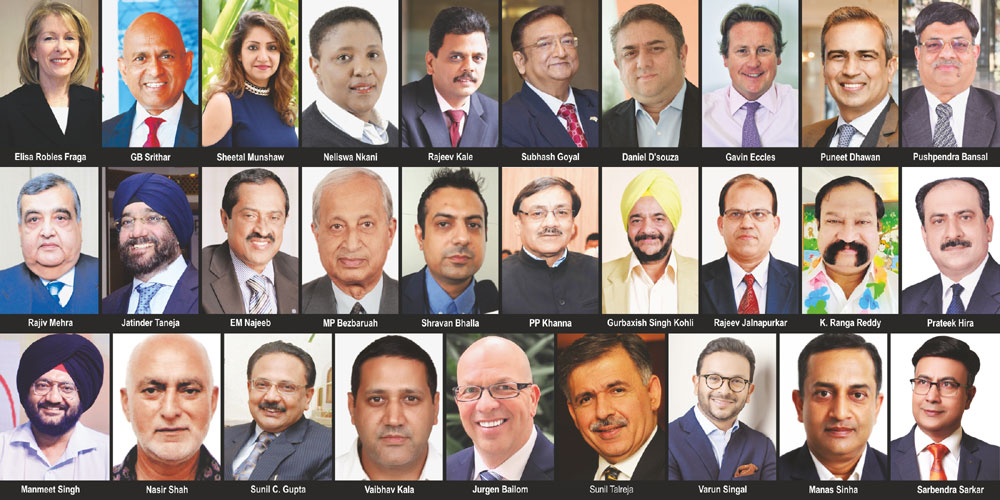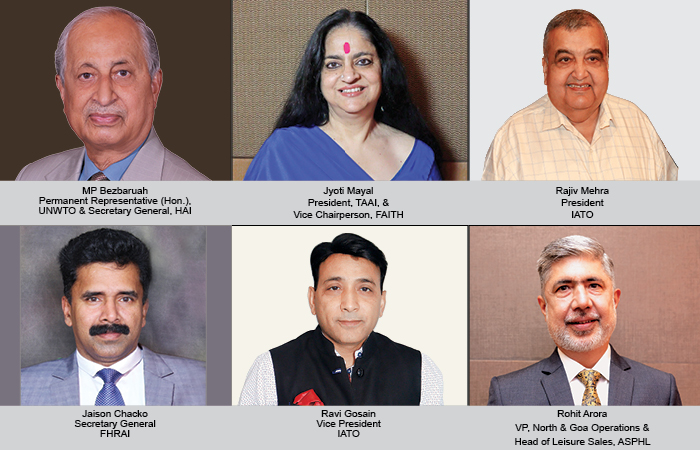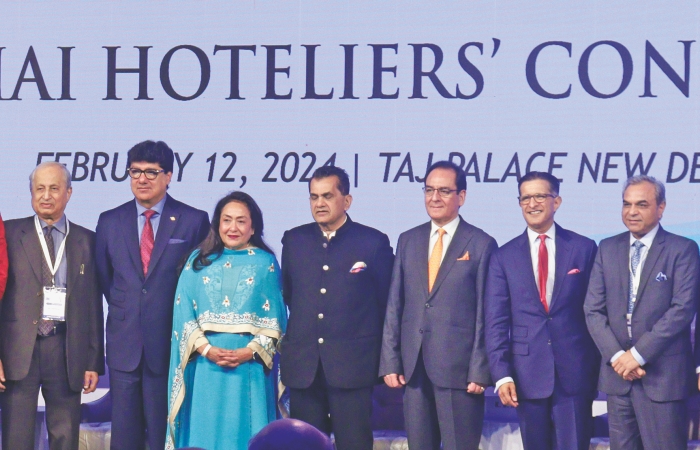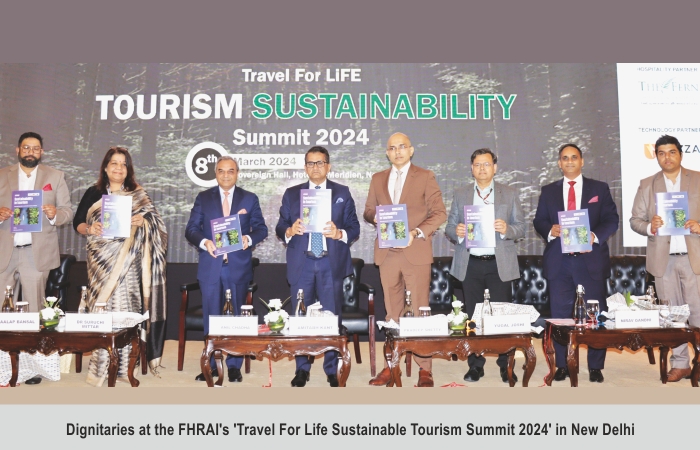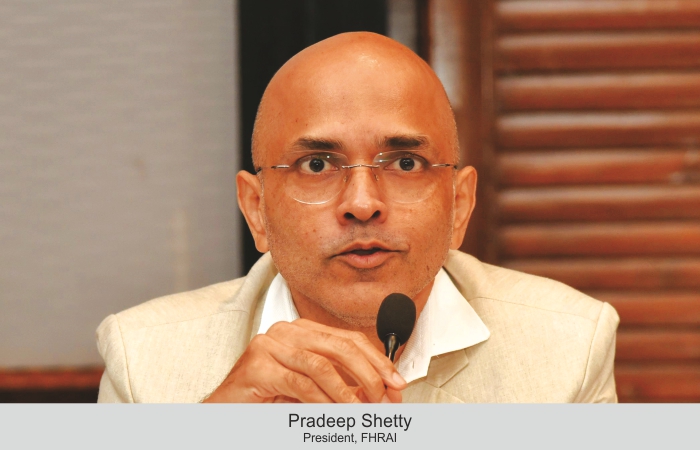Travel fraternity is positive for the next year, 2022, especially when you compare the given upcoming period, with the year before.
NTO
Elisa Robles Fraga, Director, Tourism Office of Spain, Mumbai, India
In the post-pandemic era, we feel the Indian traveller will seek mono-destination journeys or focus on one or two countries, as against the earlier trends of planning a multi-country trip. The tourism sector has changed in last couple of years. Although flight bookings to Spain seem to have decreased in 2021 compared to last year, as per our sources the outlook for the upcoming months is extremely positive, especially when you compare the given upcoming period with a year before. A few factors that earlier played a role in selection of a tourism destination, are no longer relevant. Various factors such as entry protocols, ease of internal movement, health system of the destination, implementation of modern solutions to facilitate travel play a role when a traveller prefers one destination over another.
GB Srithar, IMESA, Singapore Tourism Board
Year 2021 has indeed been a very busy and fruitful year in trade and consumer engagements for us, despite the many constraints that we faced. Digital transformation has given a considerable boost to the sector and at the same time, changed tourist expectations. For example, contactless payments have become the norm and it is likely that this will continue to gain momentum over the years. Singapore has gone digital and contactless. Changi Airport’s kiosks, for example, employ proximity sensors rather than touchscreens, immigration lanes use biometric face and iris ID, and terminal robots spray sanitizing mist. Some attractions have also gone contactless.
Sheetal Munshaw, Director, Atout France, India
Some of the major developments we saw this year were easing of the travel rules and regulations for vaccinated travellers to overseas destinations. Also sustainable tourism and ways to travel responsibly, with a focus on protecting the environment have become a conscious effort adopted by most of the tourism organisations in the promotion of their respective countries. Digitalisation has also made it’s presence felt in a big way during the pandemic with contactless payment, travel and health applications and other travel modalities that have now adopted digitalisation into their processes. Digital parameters will be a mainstay for travel in times to come. Another important aspect is flexibility while booking the holidays.
Neliswa Nkani, Hub Head – Middle East, India and South East Asia, South African Tourism
The year 2021, was the year of rebuilding momentum for us. The restarting of international flights and the high rate of vaccinations across the globe were definitely big wins for outbound tourism from India. It was also impressive to see how quickly the industry adapted to the new technology. 2021 was a good year for us, especially considering the various global restrictions in place during the first half of the year. We are even more optimistic about the future, as vaccination rates are surging in all the states. We have been witnessing growing interest, demand and queries for South Africa as a tourism destination, since ther is no requirement for quarantine in South Africa.
TOUR OPERATOR
Rajeev Kale, President & Country Head – Holidays, MICE, Visa, Thomas Cook (India)
With easing restrictions, reopening of international borders and vaccine acceptance, we witnessed significant pent up demand for travel from various segments for both domestic and international destinations. As we moved from survival to revival, we implemented strategies to build scale and create a safe and contactless journey through digitalisation. Due to restrictions on international travel, destination India came into the spotlight and we saw domestic demand overtake that of our pre-pandemic 2019 levels. We also witnessed noteworthy green shoots in our MICE segment with corporate MICE keen on making the most of their unspent budgets of 2021.
Subhash Goyal, Chairman – STIC Travel & Air Charter Group and President – Confederation of Tourism Professionals
Last year, the tourism industry passed through the worst ever crisis. In 2021, we managed to grow business with some ups & downs. We were further expanding and specialising by making all our GSA products into a separate independent entity as STIC GSA Services, and all our non-GSA activities like outbound and inbound tours came under STIC Travels. We saw an opportunity to transport stranded passengers, so we organised a few repatriation charters and restart some flights under the air bubble arrangement of the GoI. We also realised that we were focusing too much on outbound tourism, so we are now planning to get involved in domestic tourism, weddings and events.
Daniel D’souza, President and Country Head, SOTC Travel
Year 2021 witnessed an encouraging revival of the travel business along with a boom of domestic tourism. The demand to explore offbeat domestic destinations within the country outstripped 2019. Our customers across segments (including but not limited to) multigenerational families, millennials/young professionals, business and b-leisure travellers, spiritual travellers, and honeymooners displayed a strong demand to explore India. Following the announcement by civil aviation on easing of restrictions on domestic airline operations, we witnessed significant demand for air-inclusive travel packages which further influenced customers to extend their holidays from four days to seven and even ten days.
AVIATION
Gavin Eccles, Managing Partner, GE Consulting & Advisory
I see two very interesting developments in 2021. First, the launch of a new low-cost carrier for India, Akasa Air, as the fifth player in this space. Will it be able to create its own space in the domestic market that allows a successful low-cost carriers (LCC) strategy? Second is the announcement of the future of the airline, Air India. Like most of the aviation markets across the globe, closure of the borders has made an international strategy difficult, and, emphasis was, therefore, placed on how to build a stronger domestic push. But, unlike other major domestic markets, the country has the added challenge of capacity and flight caps on domestic services which did not allow them to exploit this opportunity.
HOTELS
Puneet Dhawan, Senior VP Operations, Accor India & South Asia
Keeping the second wave and its repercussions on the hospitality industry in general aside, in 2021 we witnessed a significant improvement in occupancies and bookings. With continuous efforts towards vaccination drives and ease in travel restrictions, we are looking at a consistent recovery. Domestic travel this year was soaring, with leisure destinations such as Udaipur, Jaipur, and Goa dominating the market for leisure stays. Also, business travel is gradually rebounding in the country, and there is a moderate increase in corporate and M!CE bookings. We are constantly monitoring the industry for any shifts. The hospitality industry is moving towards a new era – one with innovation in technology and unconventionality.
Pushpendra Bansal, COO-Lords Hotels and Resorts
The beginning of the year 2021 has been quite a difficult one for most of us. The second wave of the pandemic has caused completely devastatation to the hospitality industry. Now it seems the whole nightmare is over and we have become optimistic. The industry is rebounding to a desired future state that has vastly improved as compared to the first quarter. This has also increased the room occupancy. Sales in restaurants continue to increase too. The upcoming year, 2022, has a lot of hope and optimism riding on it. It will give us an opportunity to start afresh and work towards rebuilding what we have lost. Although we are entering the next year, it is best to let the past two years become memories and celebrate the upcoming year with a lot of joy and happiness. We have to work hard to go up to the pre-pandemic level.
ASSOCIATIONS
Rajiv Mehra, President, IATO
The year 2021 has given us one understanding that, apart from the tourism trade, we must have some other source of income. As soon as we have money, we must diversify into something not related to tourism. We have also learnt that we must keep surplus money with us. There has not been much development in inbound tourism, with no business at all. Yet, domestic tourism has grown, but most of it is direct business for the hotels. While 25% of the total business is happening through travel agents and tour operators, internationally there has not been much. Since November 15, when visas started, some FITs started coming, but now with the new Omicron variant and new quarantine rules, people, especially from the UK and Europe, are cancelling their tours.
Jatinder Taneja, Vice-Chairman, PATA India Chapter
While 2021 displayed some hope for revival, inbound tourism has been impacted the most. However, we did welcome our first client from Spain in November. Despite the good movement in domestic business, travellers preferred to make bookings directly. One of the major developments of 2021 was the finalisation of COVID protocols by the MHA. Also, India has started granting tourist e-visas to most countries. The long-pending SEIS demand of the travel trade was finally met, and that was a big relief to the industry. The boost we were prepared for, has been derailed again by the new Omicron variant. With new restrictions in place, international business that was just finding its footing after two years of devastation brought by COVID-19 has started to suffer again.
EM Najeeb, Senior Vice President, IATO
We are all going through an unprecedented crisis situation because the most affected businesses due to the pandemic are travel and tourism. However, our company has retained all of our employees. We have supported our employees, and they have stoodd by us. Now, we are on a recovery path with air bubble flights, and we expect to recover faster once normal flight operations and tourist arrivals are achieved.The pending SEIS demand of the trade has finally been met, giving the industry a big relief. However, if we are to go back to the pandemic days now that Omicron variant of caronavirus is here, the reopening and revival of the industry will be postponed, as the international arrivals from ‘at risk’ countries have been temporarily banned. The crisis has made us all learn something, one way or the other, to live with difficulties.
MP Bezbaruah, Secretary General, Hotel Association of India
There is a positive sentiment from the market as many people have been vaccinated and are now comfortable travelling. Leisure locations are attracting attention. However, branded hotels, resorts, and quick get-away places around metropolitan cities showed good recovery. However, smaller hotels in semi-urban areas did not reap the benefits as they had hoped. Most of the business was transacted online, so perhaps a little decline in the role of tour operators and travel agents. The hotels have also shifted to digitalisation and automation in operations. It has become necessary. Hotels had to look at their bottom lines of profitability. Therefore, productivity and efficiency in operations are receiving renewed attention.
Shravan Bhalla, General Secretary, OTOAI
The year 2021 was a see-saw for the travel fraternity. In the initial months, the business was slow. With the horror of the second wave, people were scared to travel even domestically. However, with the vaccination in full swing and a decrease in the number of daily cases, we saw normalcy from August onwards. Since then, business has picked up and we have gone back into business. The demand was such that the airfares have skyrocketed. The current situation is again worrisome with the new variant, but we hope things get back to normal soon. Due to COVID, we saw local tourism booming, and we saw improved infrastructure, new projects, and unheard-of boutique properties come into existence.
PP Khanna, President, ADTOI
Having faced a tough time with no business or at least one business in 2020, this year was a sunny year for the tourism industry, with the major steps taken by the government, especially its vaccination drive. Initially starting with nearby popular tourist destinations or weekend destinations, it now covers pan-India destinations. The year has brought some cheers to the industry. Major developments include the change from virtual meetings, marts, and exhibitions to physical events of all kinds of tourism activities, and now with international flights operating from the country by the end of the year, other segments will also start, which has been awaited by travellers. The MoT and state tourism boards are very proactive in reviving tourism.
Gurbaxish Singh Kohli, Vice President, Federation of Hotel & Restaurant Associations of India (FHRAI)
Hotel and restaurant business in general has been and continues to be severely impacted over the last two years due to the pandemic. When compared with the previous year (2020), this year (2021) has by far been the worst. Although the businesses were operating partly throughout the year, they were under a lot of stress. The entire year was non-productive and we cannot qualify 2021 as a year of business. The businesses will continue to bleed and underperform for at least the coming four quarters before we see any proper demand. Cooking and food went online, disposable crockery, cutlery and digital menus have become a trend, and a new vertical of cloud kitchens became immensely popular.
Rajeev Jalnapurkar, Chairman, Indian Association of Amusement Parks & Industries (IAAPI)
The amusement industry was allowed to reopen by MHA only after October 15, 2020, post the first lockdown. Few parks reopened since major states continued with their lockdown and reopened only after the situation was under control. The industry, which is high on Opex and Capex, was settling down and was looking forward to the summer season in 2021. Unfortunately, the second wave of April 2021 again forced lockdown. This completely thrashed the hope and aspiration to re-bounce. Footfall to the parks was at an all-time low due to COVID fears and a cash crunch.The amusement industry has already lost its biggest peak summer season and it will take quite some time for the parks to operate at their optimal capacity.
K. Ranga Reddy, Chairman IATO- Andhra Pradesh and Telangana Chapter
Domestic tourism helped us to regain at least 40 per cent of our hope to remain in the tourism industry. They range from budget to deluxe clientele, and a couple of conferences with COVID-19 protocols took place in Hyderabad. Also, wedding destinations such as Ramoji Film City and other resorts on Hyderabad’s outskirts boosted tourism survival. People slowly realised they needed to be careful with the government rules in terms of cleanliness, social distance, and wearing masks. This really helped people to plan and visit various tourist destinations. The beaches, as well as the hills of Northern India, benefited from the home stay concept, which is a game changer in terms of employment creation and experiencing the culture of the locals.
Prateek Hira, Chairman IATO Uttar Pradesh Chapter
The year 2021 is not a business year, but a better way to call it would be to call it a year of “rebuilding business”. We have been through rebuilding, realigning, and re-engineering in a bid to create a strong foundation that was on a sabbatical during the pandemic. The objective is to lower our accumulated losses as soon as possible, re-breakeven, and grow again. Practically speaking, not only our business but other businesses in the sector, I hope, will take as many as three years in order to come to the pre-pandemic level. To reduce our pain and suffering, we have started to think and behave like a start-up, analysing the changed business environment. The re-gestation period will be based on new benchmarks rather than the pre-pandemic (2019-20) benchmarks. It has been a year of hope, optimism, rediscovery and learning for us!
Manmeet Singh, Chairman – IATO Punjab Chapter
For the tourism industry, it is like being reborn. The only benefit from this endangerment is that we are reborn as adults, and not as children, so we have started with the knowledge base already acquired and the support of a huge loyalist client base, which has been carefully nurtured over so many years. The tourism industry, after opening up after the COVID-19-induced lockowns, has got heavily dependant dependent on domestic tourism.
Fortunately, since we have a domestic division and my offices were handling a swarm of domestic clients also, we have started getting business from the domestic tourism segment. This has kindled a spark of hope and optimism in us. But there is a lot more to be accomplished in order to reach to the pre-pandemic levels, and we are working strenuously towards it.
Nasir Shah, Chairman – IATO Jammu & Kashmir Chapter
Due to the closure of international destinations, domestic tourism came as a blessing in disguise for us. There was a heavy rush of domestic tourists to to destinations such as Jammu and Kashmir, Ladakh, Himachal Pradesh, and the North Eastern states. However, as far as destinations such as Gulmarg, Pahalgam, and Srinagar are concerned, we are in a dearth of four to five-star hotels. The government must invite more hoteliers to build star properties in these destinations. Due to shortage of hotels and heavy demand, rates have skyrocketed. Despite the COVID-19 variants, J&K Tourism Department continued its promotional activities. Besides, as many as 40 flights have been operating to Jammu and Kashmir in India ever since flying to overseas destinations have been stopped.
Sunil C. Gupta, Chairman, IATO (Northern Region)
Inbound business in the year 2021 was almost nil for the complete inbound vertical. Although M!CE, domestic tourism, and weddings are gaining momentum and are now bringing in quite some revenue. This being the wedding and festival season, it has become a great source of business for most of us in the hospitality and travel industry. We experienced growth in arrivals at Gwalior due to the introduction of thirteen flights into Gwalior and also at Varanasi, where trips could be extended to places like Ayodhya, Pryagraj, and Bodh Gaya”. It was mostly domestic tourism that saw the growth and was largely “proximity tourism,” with self-drive holidays, since that was the safest means of travelling during the COVID-19 pandemic and people wanted to move out of their homes due to the Work from Home scenario.
Vaibhav Kala, Vice President, ATOAI
We should be back to pre-pandemic level with less than 20 per cent, by the end of the financial year. It will take lots more time to recover from the losses of 2020–21. Major developments were the need to plan and be ready for such kind of situations in the future like more lockdowns, and be prepared with a back-up plan for survival in such scenarios. Over 2020–22, encouraging development of new products, having strong Standard Operating Procedures, and having a team that could deliver them became absolutely critical. A year of huge struggle, challenge, and innovation, but keeping open through the second wave was critical. Making sure the team was well motivated and working together to understand the developments, Standard operating Procedures, and keeping everyone safe was important to the business.
CRUISE
Jurgen Bailom, CEO and President, Waterways Leisure Tourism
Cordelia Cruises was launched in September 2021. The response we have received so far is not only encouraging, but also overwhelming. It is twice as much as we could have ever anticipated. Indians are exploring vacation opportunities that are different than what they have doen earlier and haven’t been experienced by them, at all. We can safely make the statement, that we are in the right place at the right time. Enquiries and bookings for group holidays and weddings are pouring in. The sailings were to Goa, Kochi, Diu, and Lakshadweep. We have completed 20 sailings with 20,000 guests to date, and they are still growing. Cordelia Cruises has put India on the global cruising map.
TECHNOLOGY
Sunil Talreja, Vice President- India operations, InterGlobe Air Transport
2021 was an exceptional year for the industry due to the pandemic. However, the second wave of virus and uncertainty on resumption of flights kept the industry at bay. If we talk about our business, overall, we are stronger as an organisation and have diversified our portfolio to cater the changing landscape of the industry. 2021 saw a major overhaul when it comes to the travel industry. There has been a major shift to domestic tourism, and Indians are exploring their own country. Going forward, we feel that domestic and short haul travel demand will remain bullish.
Varun Singal, Executive Director, Dex Group
It’s been rough time for the entire Industry. DEX Group’s business verticals operate within the travel, tourism & hospitality sectors. The last year, adversely disrupted our industry like nothing seen before. From organisations winding up to job losses in millions, it has been a year that has made all of us stakeholders in this industry relook and risk-assess everything that we do. However, we have also seen some positive developments, which is the strong ‘pent up’ demand for travel among Indians that has led to a quick rebound in domestic tourism and surge in fare levels for int’l travel. This trend will continue, moving forward towards the opening of borders and international scheduled flights.
Manas Sinha, Director, ISA Tourism
The years 2020 and 2021, were roller coaster rides. However, we have maintained the market presence by reminding travel partners about our hotel representations of upscale brands, mainly Far East Hospitality, small Luxury Hotels of the World and others. We used webinars, virtual training and quiz sessions ending with awards to engage and motivate travel partners. In the ongoing uncertainty, we were able to secure the India market representation for Conrad Maldives resort and The Fortress Resort & Spa, Sri Lanka. Outcome for Maldives has been productive, though not much for others in the absence of commercial flights to any other of our markets.
Sarbendra Sarkar, Founder & MD, Cygnett Hotels & Resorts
If you compare this year with 2020, I would say the business has been better. People wanted to travel and Cygnett Hotels & Resorts, as a responsible service provider, wanted to offer perfect conditions for the tourists to stay at. Giving them hygienic stay options were critical so as to pave the way for the success of the travel trade industry. Furthermore, the increasing vaccination rate gave a positive outlook to help the people ward off the pandemic fears. This has, in other words, led to an increase in bleisure travel — business as well as leisure — which proved to be integral to our better performance during the year in the given scenario.
Inputs by Hazel Jain
 TravTalk India Online Magazine
TravTalk India Online Magazine

